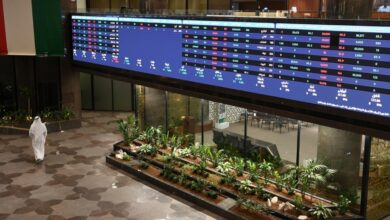Kuwait’s bold move borrowing amidst a $1 trillion reserve
The Cabinet’s approval of a KD 30 billion financing law over 50 years has sparked debate, marking the country’s first return to global debt markets since 2017 and reducing reliance on reserves.

• Kuwait, despite its strong financial position, economic buffers, and low debt, faces a liquidity shortfall, making loan allocations crucial for funding capital projects and driving development.
• The ‘Financing and Liquidity’ program ensures responsible borrowing, protects the economy from financial shocks, regulates liquidity, localizes savings, and strengthens the government’s financial stability.
• Public debt strengthens credit ratings, boosts investor confidence, develops debt markets, ensures responsible borrowing, lowers costs, protects the economy, and enhances government financial stability.
The Cabinet’s approval of a KD 30 billion financing and liquidity law over fifty years has sparked debate among economists and investors about its impact on both the government and private sector. Notably, it marks Kuwait’s return to international debt markets for the first time since 2017, shifting away from reliance on general reserves. But why is wealthy Kuwait borrowing?
One of the most frequently asked questions, both before and after the approval of the “Financing and Liquidity” bill, is why Kuwait—a wealthy country—needs to borrow. Kuwait’s reserves for future generations exceed $1 trillion, according to data from international institutions monitoring sovereign wealth funds. Additionally, specialized studies indicate that Kuwait has sustained oil revenues sufficient to last for approximately 100 years, the Al Rai newspaper reported.
What further complicates the issue is that rating agencies affirm Kuwait’s strong financial position, backed by vast wealth, economic strength, and very low debt levels. However, it is important to clarify that sovereign borrowing does not contradict this reality, nor does it necessarily indicate financial weakness.
In Kuwait’s case, the challenge lies in insufficient liquidity reserves to fund the anticipated development surge and cover the existing financial deficit. Moreover, the expected cost of sovereign borrowing is lower than the returns on sovereign assets, making public debt a financial necessity rather than a luxury.
Public debt is widely practiced in both developed and emerging economies
Moreover, public debt is generally a positive and necessary step, widely practiced in both developed and emerging economies. For instance, Japan—the world’s third-largest economy after China and the United States—is renowned for its technological advancements, yet its debt exceeds $8.4 trillion, more than double the size of Asia’s largest economy.
Here, the key criterion for assessing public debt emerges: the more productive it is, the greater its benefits and the lower its costs. However, if sovereign debt is used to finance consumer spending in public budgets, it adds further pressure to government finances.
According to the current government’s approach, spending is intended for developmental purposes, enhancing the significance of this measure and easing concerns about potential misuse.
Credit rating flexibility
Economists agree that one of the key benefits of this law is its potential to improve sovereign credit rating flexibility amid risks from oil price fluctuations and the long-term transition away from oil. Additionally, it will boost investor and creditor confidence both locally and internationally while fostering debt market growth. This, in turn, will help the private sector establish a yield curve as a benchmark for pricing other financial assets.
Protecting the economy against financial shocks
One of the most significant advantages of the “Financing and Liquidity” program is ensuring that public borrowing is managed in a way that avoids long-term financial risks. It also strengthens the national economy against financial shocks and speculation. Furthermore, it aligns with the government’s objectives of regulating liquidity, localizing savings, and enhancing its ability to meet financing obligations in the coming years through various financial buffers.
‘Financing and Liquidity’ initiative
Perhaps one of the key factors strengthening the “Financing and Liquidity” initiative and its expected positive impact is that its use is aligned with well-defined economic goals, unlike the borrowing trajectory of 2017.
Official statements, particularly from Engineer Noura Al-Fassam, the Minister of Finance and Minister of State for Economic Affairs and Investment, confirm that the borrowed funds will primarily finance capital projects launched in partnership with the private sector. This reflects the government’s commitment to financial balance through economic and fiscal reforms while enhancing administrative efficiency. She emphasized that public debt will serve as a financial tool to support infrastructure development and capital spending.
Advancing local development
This move contrasts sharply with Kuwait’s borrowing during the 2016-2017 fiscal year when approximately $8 billion was raised through international sovereign bond issuances—out of a total of $10 billion—along with two billion dinars borrowed from Kuwaiti banks. The majority of these funds were used to cover budget deficits driven by non-developmental spending.
Now, the focus is on leveraging these debts to advance local development and infrastructure projects, strengthening Kuwait’s economic competitiveness.
The “Financing and Liquidity” initiative is also a critical step in the government’s broader financial reform efforts, aimed at ensuring institutional sustainability and the well-being of citizens.
Low sovereign debt levels
A key factor that strengthens Kuwait’s borrowing capacity is its low sovereign debt levels. According to a Moody’s report, Kuwait’s debt stood at less than 3% of GDP at the end of the 2023-2024 fiscal year, among the lowest globally. The agency projects a general budget deficit of approximately 4-7% of GDP for the fiscal years 2024-2027.
Strong financial buffers
The approval of “Financing and Liquidity” is further reinforced by Kuwait’s strong credit rating and the positive outlook from international agencies regarding the country’s financial stability. This suggests that Kuwait is likely to secure sovereign loans at competitive interest rates compared to others in the region.
The country’s robust financial position, substantial wealth, and minimal debt further support the issuance of sovereign debt instruments. A key benefit of this move is alleviating pressure on the General Reserve Fund, which, according to past official statements, was nearing depletion in recent years.
As a result, the adoption of the “Financing and Liquidity” Law is a necessary reform aimed at securing funding for capital expenditures. These funds will be directed toward high-cost, fast-tracked development projects included in the annual budget.
Phased approach to borrowing
Official sources told Al-Rai that the lending capacity provided by the “Financing and Liquidity” Fund will be utilized in stages rather than all at once. Borrowing will be distributed between local and international markets at rates that help regulate Kuwait’s liquidity levels while securing the most favorable interest rates.
The sources emphasized that the state’s financing needs—whether to cover deficits or fund development—will determine the size of debt issuance, which will be adjusted based on economic activity, whether in periods of growth or contraction.
Key benefits of public debt
- Enhancing sovereign credit rating flexibility.
- Strengthening investor and creditor confidence locally and internationally.
- Developing debt markets and establishing a benchmark yield curve for the private sector.
- Ensuring public borrowing does not create long-term financial risks.
- Keeping sovereign borrowing costs lower than returns on sovereign assets.
- Protecting the national economy from financial shocks and speculation while regulating liquidity.
- Enhancing the government’s ability to meet future obligations through various financial buffers.













